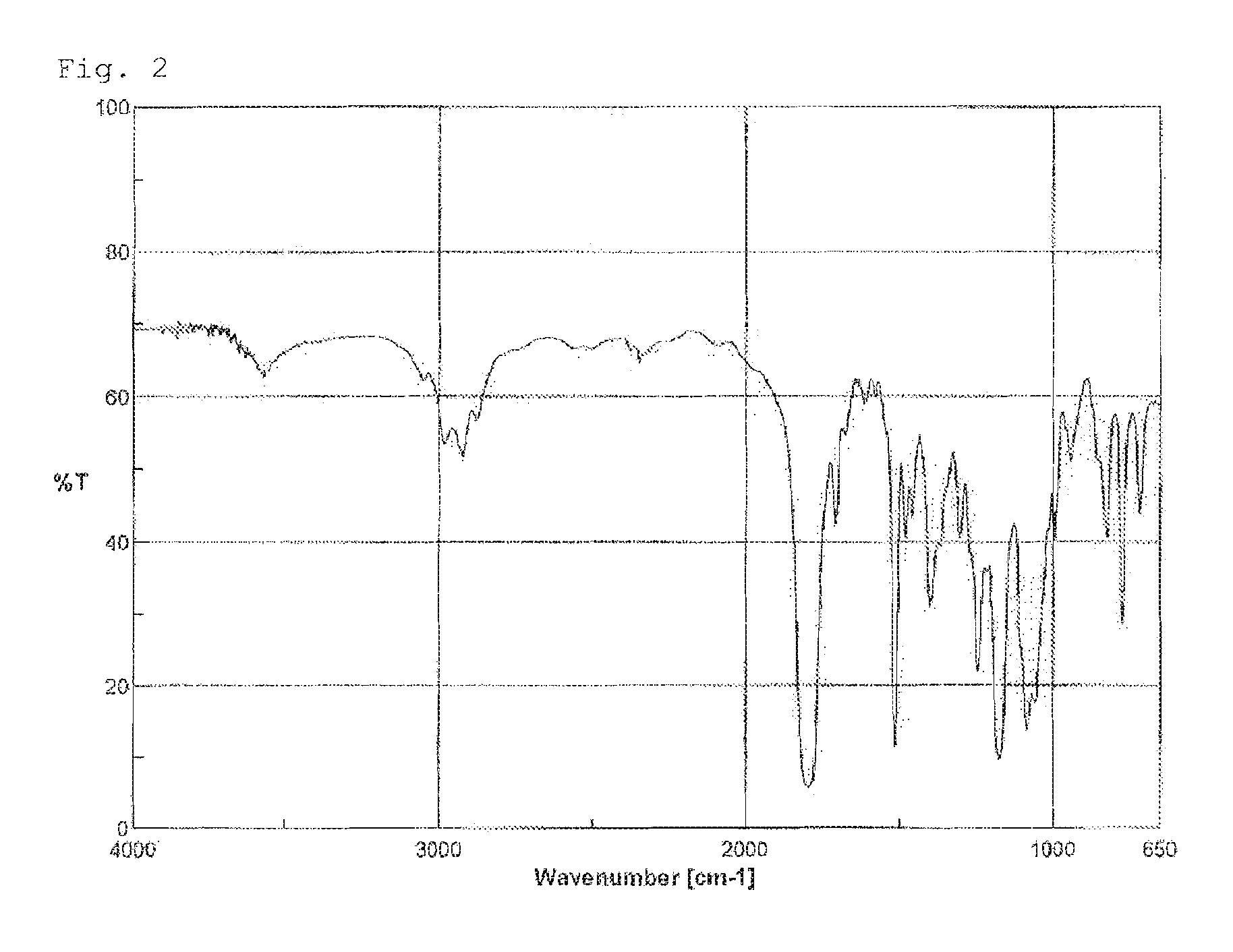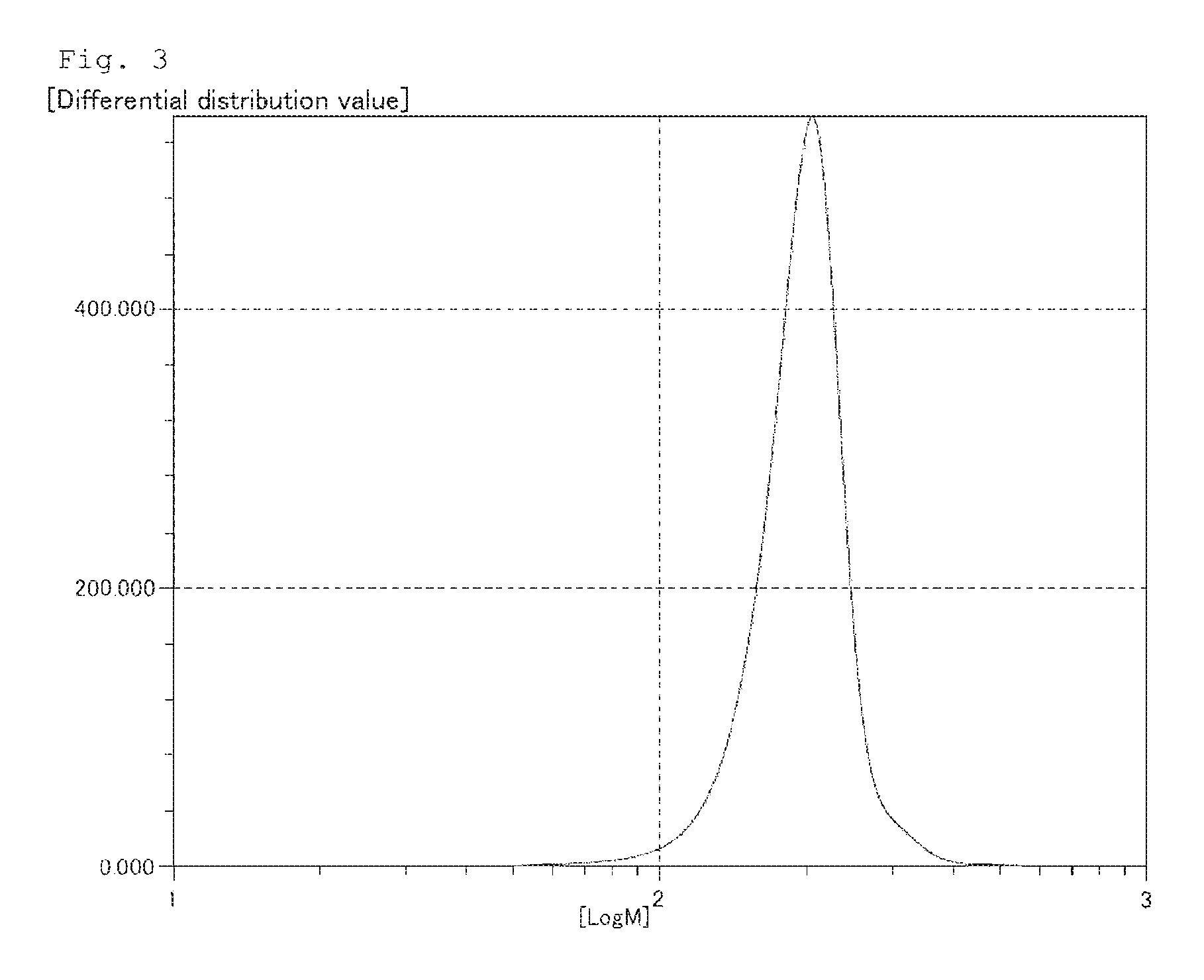Coating composition for forming gas barrier layer, gas barrier film, and method for producing gas barrier film
a coating composition and gas barrier technology, applied in the direction of organic chemistry, transportation and packaging, synthetic resin layered products, etc., can solve the problems of reducing the use of evoh, prone to moisture absorption, and not visible, so as to achieve high barrier properties, not have much humidity dependency, and high barrier properties
- Summary
- Abstract
- Description
- Claims
- Application Information
AI Technical Summary
Benefits of technology
Problems solved by technology
Method used
Image
Examples
production example 1
Synthesis of a Compound (A-1) Having 5-Membered Cyclic Carbonate Groups
[0115]A p-aminophenol epoxy resin having an epoxy equivalent of 100 (trade name: “MY0510”, product of Huntsman Advanced Materials L.L.C.; hereinafter abbreviated as “MY0510”; 100 parts), sodium iodide (product of Wako Pure Chemicals Industries, Ltd.; 20 parts), and N-methyl-2-pyrrolidone (150 parts) were charged in a reaction vessel equipped with a stirrer and an open reflux condenser. Carbon dioxide was next continuously bubbled under stirring at 100° C. for 10 hours to conduct a reaction. Subsequently, the resulting reaction mixture was diluted with ethyl acetate (200 parts). The diluted reaction mixture was transferred to a separation funnel, and then washed four times with brine to remove N-methyl-2-pyrrolidone and sodium iodide. After the washing, an ethyl acetate layer was transferred to an evaporator, and ethyl acetate was removed under reduced pressure. As a result, a clear liquid compound (97 parts) was ...
production example 2
Synthesis of a Compound (A-2) Having 5-Membered Cyclic Carbonate Groups
[0119]N,N,N′,N′-Tetraglycidyl-1,3-benzenedi(methanamine) having an epoxy equivalent of 90 (trade name: “TETRAD-X”; product of Mitsubishi Gas Chemical Company, Inc.; 100 parts), sodium iodide (product of Wako Pure Chemicals Industries, Ltd.; 20 parts), and N-methyl-2-pyrrolidone (150 parts) were charged in a reaction vessel equipped with a stirrer and an open reflux condenser.
[0120]N,N,N′,N′-Tetraglycidyl-1,3-benzenedi(methanamine) will hereinafter be called “tetraglycidylxylenediamine”. Carbon dioxide was next continuously bubbled under stirring at 100° C. for 10 hours to conduct a reaction. After completion of the reaction, methyl ethyl ketone (hereinafter abbreviated as “MEK”: 166 g) and toluene (83 g) were added to the solution, and an organic layer was taken out. The organic layer so taken out was transferred to a separation funnel, and then washed four times with brine to remove the catalyst. Further, the so...
production example 3
Synthesis of a Compound (A-3) Having 5-Membered Cyclic Carbonate Groups
[0123]Glycerol polyglycidyl ether having an epoxy equivalent of 142 (trade name: “DENACOL EX-313”; product of Nagase Chemtex Corporation; 100 arts), sodium iodide (product of Wako Pure Chemicals Industries, Ltd.; 20 parts), and N-methyl-2-pyrrolidone (150 parts) were charged in a reaction vessel equipped with a stirrer and an open reflux condenser. Carbon dioxide was next continuously bubbled under stirring at 100° C. for 10 hours to conduct a reaction. After completion of the reaction, the solvent was allowed to evaporate by an evaporator to obtain an oily compound (132 parts, yield: 99.9%).
[0124]When the thus-obtained compound was analyzed by IR, the peak around 910 cm−1 derived from the epoxy groups of the raw material was no longer observed, but instead, a peak derived from the carbonyl groups of carbonate groups which did not exist in the raw material was confirmed around 1,800 cm−1. Further, as a result of ...
PUM
| Property | Measurement | Unit |
|---|---|---|
| humidity | aaaaa | aaaaa |
| temperature | aaaaa | aaaaa |
| thickness | aaaaa | aaaaa |
Abstract
Description
Claims
Application Information
 Login to View More
Login to View More - R&D
- Intellectual Property
- Life Sciences
- Materials
- Tech Scout
- Unparalleled Data Quality
- Higher Quality Content
- 60% Fewer Hallucinations
Browse by: Latest US Patents, China's latest patents, Technical Efficacy Thesaurus, Application Domain, Technology Topic, Popular Technical Reports.
© 2025 PatSnap. All rights reserved.Legal|Privacy policy|Modern Slavery Act Transparency Statement|Sitemap|About US| Contact US: help@patsnap.com



